#Bradypus
Text
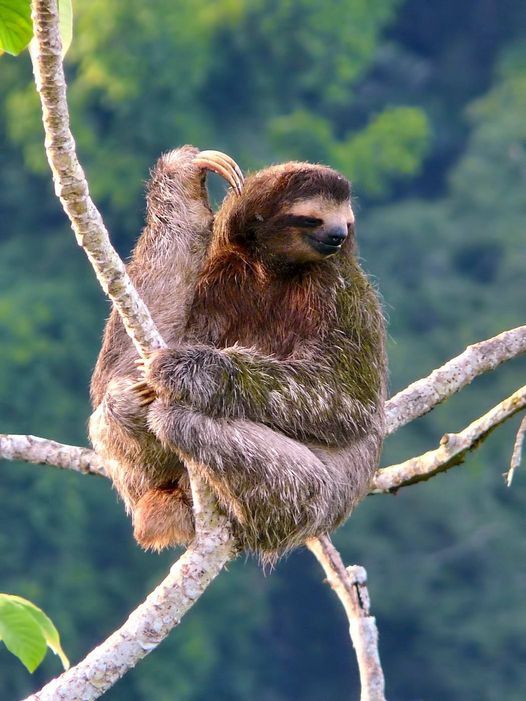
Brown-throated Three-toed Sloth (Bradypus variegatus), family Bradypodidae, found in southern Central America and northern South America
photograph by Charlie Jackson
133 notes
·
View notes
Text

Three-toed Sloth
15 notes
·
View notes
Text

Happy International Sloth Day 2023! Take time to learn about these adorable and fascinating mammals of Central and South America today, and draw inspiration from their peaceful energy efficient lifestyles.
If you love sloths and want to learn more about them, or even help them through volunteering or donations, please check out the following organisations saving sloths and promoting conservation of their natural habitats.
https://slothconservation.org/https://www.aiunau.org/en/home-2/https://toucanrescueranch.org/https://greenfundsuriname.org/
#katia hougaard#sloths#two toed sloth#three toed sloth#bradypus#choleopus#colour pencils#jungle#cute animals#jungelcore#rainforest#nature#animals#international sloth day#my art
11 notes
·
View notes
Text

1 note
·
View note
Text
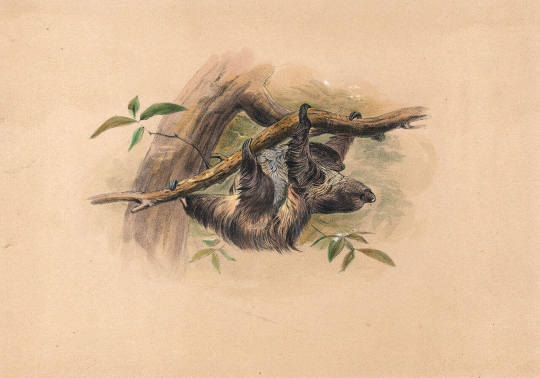
Bradypus tridactylus | Joseph Wolf (1820-1899)
93 notes
·
View notes
Note
all kidns of strange and wonderful beafts in the world. how do we even know them all. wh
That’s the beauty of it: we don’t know them all! We’re constantly discovering new species! Granted, some of these discoveries weren’t completely unknown to science and were only misidentified as a different animal, but they’re still pretty cool nonetheless. Here are some mammals that were discovered in the past few years:

The Popa langur (Trachypithecus popa), first described in 2020.


The northern greater glider (Petauroides minor) and the central greater glider (Petauroides armillatus), upgraded from subspecies of the southern greater glider (Petauroides volans), to their own species in 2020.

The Ramari’s beaked whale (Mesoplodon eueu), described from a single beached specimen in 2021!
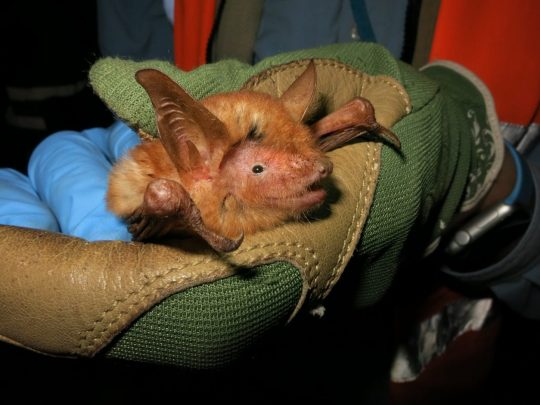
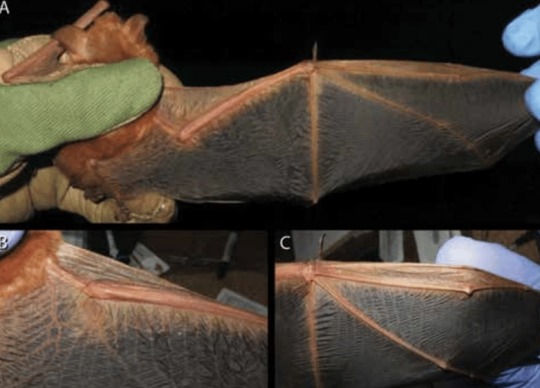
The striking Halloween colored Nimba myotis bat (Myotis nimbaensis), described in 2021.

The southern maned sloth (Bradypus crinitus), first described in 2022.

The Benin tree hyrax (Dendrohyrax interfluvialis), first described in 2022.


The eastern Mindanao gymnure (Podogymnura intermedia) and the Kitanglad gymnure (podogymnura minima), first described this year, in January 2023.
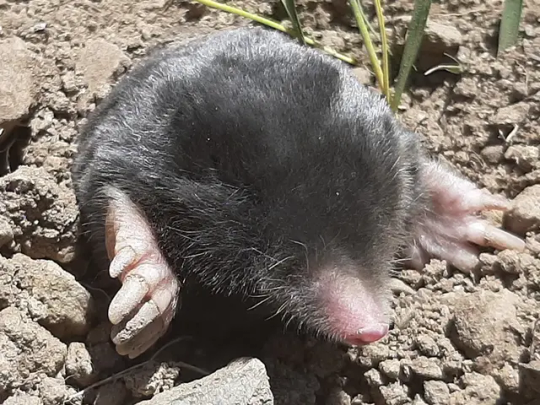
And the Talpa hakkariensis mole, described just last month in August 2023!
1K notes
·
View notes
Text

This 16th-century artwork is of a 'haut', which are said to live in the trees. It has been identified with species of three-toed sloths such as Bradypus variegatus which are found in the forests of Central and South America. This artwork comes from 'Cosmographie universelle' (1575) by the French explorer and writer Andre Thevet (1516-1590). The book describes the history and geography of the lands in which Thevet had travelled. The two volumes contain over 1000 pages divided into 23 books. This woodcut is from chapter XIII of book XXI.
#library#law library#libraries#rare books#history#books & libraries#rarebook#london#mtlibrary#inns of court#sloth#south america#16th century#early printed books#explorer#nature#animals#wildlife#1500s#artwork
375 notes
·
View notes
Text

A surprise final panel to St. Domingue Oiseaux (St. Domingue's Birds) (1776).
Pale-throated sloth (Bradypus tridactylus)
Internet Archive
66 notes
·
View notes
Text
Phoretic (living on the surface, but not parasites) organisms on sloths
A sloth moth is a coprophagous moth which has evolved to exclusively inhabit the fur of sloths and to use sloth dung as a substrate for the early stages of reproduction. Sloth moths include Bradypodicola hahneli,[1] Cryptoses choloepi,[1] Cryptoses waagei,[2] Cryptoses rufipictus,[2] and Bradypophila garbei.[2]
Certain lepidopteran moths of the snout moth family Pyralidae (namely subfamily Chrysauginae) have evolved to inhabit sloth fur exclusively. Typically, sloth moths follow a life-style broadly on the lines of Cryptoses choloepi, a moth in the snout moth family that lives exclusively in the fur of the brown three-toed sloth Bradypus variegatus infuscatus. Adult female moths leave the fur of the sloth to lay eggs in the sloth droppings when the sloth descends, once a week, to the forest floor to defecate. The larvae of Cryptoses choloepi live in the dung and newly emerged moths later fly from the dung pile into the forest canopy to find a host sloth.[3][4]
Chrysaugine moths, such as Cryptoses spp., spend their lives as adults in the fur of sloths, particularly the three-toed species, except when the sloths descend to defecate and females fly to the sloth dung to oviposit. An imbalance in population sex ratios favouring males has been noticed and surmised as female moths not making it back to host sloths after ovipositing.[1]Pale-throated sloth (Bradypus tridactylus)
Sloth moths are thought to get nutrients from the secretions of the sloths' skin and the algae present on the fur, as well as protection from avian predators.[1]
Some individual three-toed sloths have been recorded carrying more than 120 moths in their fur. Two-toed sloths are recorded as harbouring lower populations. Several different moth species may coexist on the same host animal.[1]
some people say that the moths eat the moss on the sloth but no. theres no moss on the sloth. there is algae on the sloth. and also mostly it seems they eat the sloth leavins of various kinds
on the algae:
Milla Suutari and colleagues found that the predominant algae inhabiting sloth fur was Trichophilus welckeri. It is passed directly from mother to offspring and young sloths gain the algae and other parasites by the time they are a few weeks old. This species of algae is host specific and has not been found to occur in any other environment. This finding adds strong support to the hypothesis that there is a co-evolutionary relationship between the sloths and the algae of the genus Trichophilus, which may well only exist as a symbiont.
special algae just for sloths.
but its not just sltohs and algae! there are beetles!
Beetles form a prominent portion of the arthropod community associated with sloth and sloth dung. A number of species of the coprophilous family Scarabaeidae are associated with three-toed but not two-toed sloths. The populations of these beetles can be quite large, in one case more than 980 beetles of the species Trichilium adisi were found in the fur of a single sloth. Beetles of the genus Uroxys have been recorded from sloths in Bolivia, Brazil, Colombia and Panama.[1]
Beetles appear to congregate preferentially in specific parts of the body. For example, scarab beetles occur near the elbow or on the flanks behind the knees buried deep inside the fur, while those of Trichilium spp have been found in the underfur of the lower back and thighs of Bradypus torquatus. Beetle larvae and some adult beetles use sloth dung for feeding. The population of beetles varies and the seasonal factors affecting the population size are yet to be ascertained.[1]
a little ecosystem just on the sloth... i wonder if other organisms filled this role before the sloth. arboreal dinosaur with bugs in its feathers!
29 notes
·
View notes
Text
All animal species (and a couple algae) that have kept the same scientific name since Linnaeus
The first work of taxonomy that is considered as having any scientific authority for animal species was the 10th edition of Linnaeus' Systema Naturae, published in 1758. (Also a book on spiders called Aranei Suecici, published one year before.) That's the foundational text of the binominal system of nomenclature of species still in use today. Since then most of Linnaeus' original species (4379 species, of which 185 mammals, 554 birds, 217 "amphibians" (including reptiles and cartilaginous fish), 379 fishes, 2104 "insects" (including various arthropods, of which 664 are beetles and 543 are moths & butterflies crammed into only 3 genera), and 940 "worms" (including basically all other invertebrates, and even some protists and algae)) have been dismembered, renamed, or at least moved to different genera (e.g. the house sparrow went from Fringilla domestica to Passer domesticus).
Here is a list of all of Linnaeus' original species from 1758 that still retain their original name. I believe they are 484 in total.
"Mammalia"
(Primates)
Homo sapiens (human)
Lemur catta (ring-tailed lemur)
Vespertilio murinus (rearmouse bat)
(Bruta)
Elephas maximus (Asian elephant)
Trichechus manatus (West Indian manatee)
Bradypus tridactylus (three-toed sloth)
Myrmecophaga tridactyla (giant anteater)
Manis pentadactylus (Chinese pangolin)
(Ferae)
Phoca vitulina (harbor seal)
Canis familiaris (dog)
Canis lupus (grey wolf)
Felis catus (house cat)
Viverra zibetha (Indian civet)
Mustela erminea (stoat)
Mustela furo (ferret)
Mustela lutreola (European mink)
Mustela putorius (wild ferret)
Ursus arctos (brown bear)
(Bestiae)
Sus scrofa (wild boar/pig)
Dasypus septemcinctus (seven-banded armadillo)
Dasypus novemcinctus (nine-banded armadillo)
Erinaceus europaeus (European hedgehog)
Talpa europaea (European mole)
Sorex araneus (common shrew)
Didelphis marsupialis (common opossum)
(Glires)
Rhinoceros unicornis (Indian rhinoceros)
Hystrix brachyura (Malayan porcupine)
Hystrix cristata (crested porcupine)
Lepus timidus (common hare)
Castor fiber (European beaver)
Mus musculus (house mouse)
Sciurus vulgaris (red squirrel)
(Pecora)
Camelus dromedarius (dromedary camel)
Camelus bactrianus (Asian camel)
Moschus moschiferus (musk deer)
Cervus elaphus (red deer)
Capra hircus (goat)
Capra ibex (Alpine ibex)
Ovis aries (sheep)
Bos taurus (cow)
Bos indicus (zebu)
(Belluae)
Equus caballus (horse)
Equus asinus (donkey)
Equus zebra (mountain zebra)
Hippopotamus amphibius (hippopotamus)
(Cete)
Monodon monoceros (narwhal)
Balaena mysticetus (bowhead whale)
Physeter macrocephalus (sperm whale)
Delphinus delphis (common dolphin)
"Aves"
(Accipitres)
Vultur gryphus (Andean condor)
Falco tinnunculus (common kenstrel)
Falco sparverius (sparrowhawk)
Falco columbarius (pigeonhawk)
Falco subbuteo (Eurasian hobby)
Falco rusticolus (gyrfalcon)
Strix aluco (tawny owl)
Lanius excubitor (great grey shrike)
Lanius collurio (red-backed shrike)
Lanius schach (long-tailed shrike)
(Picae)
Psittacus erithacus (grey parrot)
Ramphastos tucanus (white-throated toucan)
Buceros bicornis (great hornbill)
Buceros rhinoceros (rhinoceros hornbill)
Crotophaga ani (smooth-billed ani)
Corvus corax (raven)
Corvus corone (carrion crow)
Corvus frugilegus (rook)
Corvus cornix (hooded crow)
Coracias oriolus (golden oriole)
Coracias garrulus (European roller)
Gracula religiosa (hill myna)
Paradisaea apoda (greater bird-of-paradise)
Cuculus canorus (common cuckoo)
Jynx torquilla (wryneck)
Picus viridis (green woodpecker)
Sitta europaea (Eurasian nuthatch)
Merops apiaster (European bee-eater)
Merops viridis (blue-throated bee-eater)
Upupa epops (Eurasian hoopoe)
Certhia familiaris (Eurasian treecreeper)
Trochilus polytmus (red-billed streamertail hummingbird)
(Anseres)
Anas platyrhynchos (mallard duck)
Anas crecca (teal duck)
Mergus merganser (common merganser)
Mergus serrator (red-breasted merganser)
Alca torda (razorbill auk)
Procellaria aequinoctialis (white-chinned petrel)
Diomedea exulans (wandering albatross)
Pelecanus onocrotalus (great white pelican)
Phaeton aethereus (red-billed tropicbird)
Larus canus (common gull)
Larus marinus (great black-backed gull)
Larus fuscus (lesser black-backed gull)
Sterna hirundo (common tern)
Rhynchops niger (black skimmer)
(Grallae)
Phoenicopterus ruber (American flamingo)
Platalea leucorodia (Eurasian spoonbill)
Platalea ajaia (roseate spoonbill)
Mycteria americana (wood stork)
Ardea cinerea (grey heron)
Ardea herodias (blue heron)
Ardea alba (great egret)
Scolopax rusticola (Eurasian woodcock)
Charadrius hiaticula (ringed plover)
Charadrius alexandrinus (Kentish plover)
Charadrius vociferus (killdeer plover)
Charadrius morinellus (Eurasian dotterel)
Recurvirostra avosetta (pied avocet)
Haematopus ostralegus (Eurasian oystercatcher)
Fulica atra (Eurasian coot)
Rallus aquaticus (water rail)
Psophia crepitans (grey-winged trumpeter)
Otis tarda (great bustard)
Struthio camelus (ostrich)
(Gallinae)
Pavo cristatus (Indian peafowl)
Meleagris gallopavo (wild turkey)
Crax rubra (great curassow)
Phasianus colchicus (common pheasant)
Tetrao urogallus (western capercaillie)
(Passeres)
Columba oenas (stock dove)
Columba palumbus (wood pigeon)
Alauda arvensis (Eurasian skylark)
Sturnus vulgaris (European starling)
Turdus viscivorus (mistle thrush)
Turdus pilaris (fieldfare thrush)
Turdus iliacus (redwing thrush)
Turdus plumbeus (red-legged thrush)
Turdus torquatus (ring ouzel)
Turdus merula (blackbird)
Loxia curvirostra (crossbill)
Emberiza hortulana (ortolan bunting)
Emberiza citrinella (yellowhammer)
Emberiza calandra (corn bunting)
Fringilla coelebs (common chaffinch)
Motacilla alba (white wagtail)
Motacilla lava (yellow wagtail)
Parus major (great tit)
Hirundo rustica (barn swallow)
Caprimulgus europaeus (European nightjar)
"Amphibia"
(Reptiles)
Testudo graeca (Greek tortoise)
Draco volans (flying dragon)
Lacerta agilis (sand lizard)
Rana temporaria (common frog)
(Serpentes)
Crotalus horridus (timber rattlesnake)
Crotalus durissus (tropical rattlesnake)
Boa constrictor (common boa)
Coluber constrictor (eastern racer)
Anguis fragilis (slowworm)
Amphisbaena alba (red worm lizard)
Caecilia tentaculata (white-bellied caecilian)
(Nantes)
Petromyzon marinus (sea lamprey)
Raja clavata (thornback ray)
Raja miraletus (brown ray)
Squalus acanthias (spiny dogfish)
Chimaera monstrosa (rabbitfish)
Lophius piscatorius (anglerfish)
Acipenser sturio (sea sturgeon)
Acipenser ruthenus (sterlet sturgeon)
"Pisces"
(Apodes)
Muraena helena (Mediterranean moray)
Gymnotus carapo (banded knifefish)
Trichiurus lepturus (cutlassfish)
Anarhichas lupus (Atlantic wolffish)
Ammodytes tobianus (lesser sandeel)
Xiphias gladius (swordfish)
Stromateus fiatola (blue butterfish)
(Jugulares)
Callionymus lyra (common dragonet)
Uranoscopus scaber (stargazer)
Trachinus draco (greater weever)
Gadus morhua (Atlantic cod)
Blennius ocellaris (butterfly blenny)
Ophidion barbatum (snake cusk-eel)
(Thoracici)
Cyclopterus lumpus (lumpsucker)
Echeneis naucrates (sharksucker)
Coryphaena equiselis (pompano)
Coryphaena hippurus (dorado)
Gobius niger (black goby)
Govius paganellus (rock goby)
Cottus gobio (European bullhead)
Scorpaena porcus (black scorpionfish)
Scorpaena scrofa (red scorpionfish)
Zeus faber (John Dory)
Pleuronectes platessa (European plaice)
Chaetodon striatus (banded butterflyfish)
Chaetodon capistratus (foureye butterflyfish)
Sparus aurata (gilt-head bream)
Labrus merula (brown wrasse)
Labrus mixtus (cuckoo wrasse)
Labrus viridis (green wrasse)
Sciaena umbra (brown meagre)
Perca fluviatilis (European perch)
Gasterosteus aculeatus (three-spined stickleback)
Scomber scombrus (Atlanti mackerel)
Mullus barbatus (red mullet)
Mullus surmuletus (surmullet)
Trigla lyra (piper gurnard)
(Abdominales)
Cobitis taenia (spined loach)
Silurus asotus (Amur catfish)
Silurus glanis (Wels catfish)
Loricaria cataphracta (suckermouth catfish)
Salmo carpio (Garda trout)
Salmo trutta (brown trout)
Salmo salar (Atlantic salmon)
Fistularia tabacaria (bluespotted cornetfish)
Esox lucius (northern pike)
Argentina sphyraena (European argentine)
Atherina hepsetus (Mediterranean sand smelt)
Mugil cephalus (flathead mullet)
Exocoetus volitans (tropical flying fish)
Polynemus paradiseus (Paradise threadfin)
Clupea harengus (Atlantic herring)
Cyprinus carpio (common carp)
(Branchiostegi)
Mormyrus caschive (bottlenose elephantfish)
Balistes vetula (queen triggerfish)
Ostracion cornutus (longhorn cowfish)
Ostracion cubicus (yellow boxfish)
Tetraodon lineatus (Fahaka pufferfish)
Diodon hystrix (spot-fin porcupinefish)
Diodon holocanthus (long-spine porcupinefish)
Centriscus scutatus (grooved shrimpfish)
Syngnathus acus (common pipefish)
Syngnathus pelagicus (pelagic pipefish)
Syngnathus typhle (broad-nosed pipefish)
Pegasus volitans (longtail seamoth)
"Insecta"
(Coleoptera)
Scarabaeus sacer (sacred scarab)
Dermestes lardarius (larder beetle)
Dermestes murinus (larder beetle)
Hister unicolor (clown beetle)
Hister quadrimaculatus (clown beetle)
Silpha obscura (carrion beetle)
Cassida viridis (tortoise beetle)
Cassida nebulosa (tortoise beetle)
Cassida nobilis (tortoise beetle)
Coccinella trifasciata (ladybug)
Coccinella hieroglyphica (ladybug)
[Coccinella 5-punctata, 7-punctata, 11-punctata, and 24-punctata survive as quinquepunctata, septempunctata, undecimpunctata, and vigintiquatorpunctata]
Chrysomela populi (leaf beetle)
Chrysomela lapponica (leaf beetle)
Chrysomela collaris (leaf beetle)
Chrysomela erythrocephala (leaf beetle)
Curculio nucum (nut weevil)
Attelabus surinamensis (leaf-rolling weevil)
Cerambyx cerdo (capricorn beetle)
Leptura quadrifasciata (longhorn beetle)
Cantharis fusca (soldier beetle)
Cantharis livida (soldier beetle)
Cantharis oscura (soldier beetle)
Cantharis rufa (soldier beetle)
Cantharis lateralis (soldier beetle)
Elater ferrugineus (rusty click beetle)
Cicindela campestris (green tiger beetle)
Cicindela sylvatica (wood tiger beetle)
Buprestis rustica (jewel beetle)
[Buprestis 8-guttata survives as octoguttata]
Dytiscus latissimus (diving beetle)
Carabus coriaceus (ground beetle)
Carabus granulatus (ground beetle)
Carabus nitens (ground beetle)
Carabus hortensis (ground beetle)
Carabus violaceus (ground beetle)
Tenebrio molitor (mealworm)
Meloe algiricus (blister beetle)
Meloe proscarabaeus (blister beetle)
Meloe spec (blister beetle)
Mordela aculeata (tumbling glower beetle)
Necydalis major (longhorn beetle)
Staphylinus erythropterus (rove beetle)
Forficula auricularia (common earwig)
Blatta orientalis (Oriental cockroach)
Gryllus campestris (field cricket)
(Hemiptera)
Cicada orni (cicada)
Notonecta glauca (backswimmer)
Nepa cinerea (water scorpion)
Cimex lectularius (bedbug)
Aphis rumici (black aphid)
Aphis craccae (vetch aphid)
Coccus hesperidum (brown scale insect)
Thrips physapus (thrips)
Thrips minutissimum (thrips)
Thrips juniperinus (thrips)
(Lepidoptera)
Papilio paris (Paris peacock butterfly)
Papilio helenus (red Helen butterfly)
Papilio troilus (spicebush swallowtail butterfly)
Papilio deiphobus (Deiphobus swallowtail butterfly)
Papilio polytes (common Mormon butterfly)
Papilio glaucus (eastern tiger swallowtail butterfly)
Papilio memnon (great Mormon butterfly)
Papilio ulysses (Ulysses butterfly)
Papilio machaon (Old World swallowtail butterfly)
Papilio demoleus (lime swallowtail butterfly)
Papilio nireus (blue-banded swallowtail butterfly)
Papilio clytia (common mime butterfly)
Sphinx ligustri (privet hawk-moth)
Sphinx pinastri (pine hawk-moth)
[genus Phalaena was suppressed, but seven subgenera created by Linnaeus are now valid as genera]
(Neuroptera)
Libellula depressa (chaser dragonfly)
Libellula quadrimaculata (four-spotted skimmer dragonfly)
Ephemera vulgata (mayfly)
Phryganea grandis (caddisfly)
Hemerobius humulinus (lacewing)
Panorpa communis (scorpionfly)
Panorpa germanica (scorpionfly)
Raphidia ophiopsis (snakefly)
(Hymenoptera)
Cynips quercusfolii (oak gall wasp)
Tenthredo atra (sawfly)
Tenthredo campestris (sawfly)
Tenthredo livida (sawfly)
Tenthredo mesomela (sawfly)
Tenthredo scrophulariae (sawfly)
Ichneumon extensorius (parasitoid wasp)
Ichneumon sarcitorius (parasitoid wasp)
Sphex ichneumoneus (digger wasp)
Vespa crabro (European hornet)
Apis mellifera (honey bee)
Formica fusca (silky ant)
Mutilla europaea (large velvet ant)
(Diptera)
Oestrus ovis (sheep botfly)
Tipula oleracea (marsh cranefly)
Tipula hortorum (cranefly)
Tipula lunata (cranefly)
Musca domestica (housefly)
Tabanus bovinus (pale horsefly)
Tabanus calens (horsefly)
Tabanus bromius (brown horsefly)
Tabanus occidentalis (horsefly)
Tabanus antarcticus (horsefly)
Culex pipiens (house mosquito)
Empis borealis (dance fly)
Empis pennipes (dance fly)
Empis livida (dance fly)
Conops flavipes (thick-headed fly)
Asilus barbarus (robberfly)
Asilus crabroniformis (hornet robberfly)
Bombylius major (bee fly)
Bombylius medius (bee fly)
Bombylius minor (bee fly)
Hippobosca equina (forest fly)
(Aptera)
Lepisma saccharina (silverfish)
Podura aquatica (water springtail)
Termes fatale (termite)
Pediculus humanus (human louse)
Pulex irritans (human flea)
Acarus siro (flour mite)
Phalangium opilio (harvestman)
Araneus angulatus (orb-weaving spider)
Araneus diadematus (European garden spider)
Araneus marmoreus (marbled orbweaver)
Araneus quadratus (four-spotted orbweaver -- last four are by Clerck 1757, some of the very few surviving pre-Linnean names!)
Scorpio maurus (large-clawed scorpion)
Cancer pagurus (brown crab)
Oniscus asellus (common woodlouse)
Scolopendra gigantea (giant centipede)
Scolopendra morsitans (red-headed centipede)
Julus fuscus (millipede)
Julus terrestris (millipede)
"Vermes"
(Intestina)
Gordius aquaticus (horsehair worm)
Lumbricus terrestris (common earthworm)
Ascaris lumbricoides (giant roundworm)
Fasciola hepatica (liver fluke)
Hirudo medicinalis (medicinal leech)
Myxine glutinosa (Atlantic hagfish)
Teredo navalis (shipworm)
[shout out to Furia infernalis, a terrifying carnivorous jumping worm that Linnaeus described, but which doesn't seem to actually exist]
(Mollusca)
Limax maximus (leopard slug)
Doris verrucosa (warty nudibranch)
Nereis caerulea (ragworm)
Nereis pelagica (ragworm)
Aphrodita aculeata (sea mouse)
Lernaea cyprinacea (anchor worm)
Scyllaea pelagica (Sargassum nudibranch)
Sepia officinalis (common cuttlefish)
Asterias rubens (common starfish)
Echinus esculentus (edible sea urchin)
(Testacea)
Chiton tuberculatus (West Indian green chiton)
Lepas anatifera (goose barnacle)
Pholas dactylus (common piddock)
Mya arenaria (softshell clam)
Mya truncata (truncate softshell)
Solen vagina (razor clam)
Tellina laevigata (smooth tellin)
Tellina linguafelis (cat-tongue tellin)
Tellina radiata (sunrise tellin)
Tellina scobinata (tellin)
Cardium costatum (ribbed cockle)
Donax cuneatus (wedge clam)
Donas denticulatus (wedge clam)
Donax trunculus (wedge clam)
Venus casina (Venus clam)
Venus verrucosa (warty venus)
Spondylus gaederopus (thorny oyster)
Spondylus regius (thorny oyster)
Chama lazarus (jewel box shell)
Chama gryphoides (jewel box shell)
Arca noae (Noah's ark shell)
Ostrea edulis (edible oyster)
Anomia aurita (saddle oyster)
Anomia ephippium (saddle oyster)
Anomia hysterita (saddle oyster)
Anomia lacunosa (saddle oyster)
Anomia spec (saddle oyster)
Anomia striatula (saddle oyster)
Mytilus edulis (blue mussel)
Pinna muricata (pen shell)
Pinna nobilis (fan mussel)
Pinna rudis (rough pen shell)
Argonauta argo (argonaut)
Nautilus pompilius (chambered nautilus)
Conus ammiralis (admiral cone snail)
Conus aulicus (princely cone snail)
Conus aurisiacus (cone snail)
Conus betulinus (betuline cone snail)
Conus bullatus (bubble cone snail)
Conus capitaneus (captain cone snail)
Conus cedonulli (cone snail)
Conus ebraeus (black-and-white cone snail)
Conus figulinus (fig cone snail)
Conus genuanus (garter cone snail)
Conus geographus (geographer cone snail)
Conus glaucus (glaucous cone snail)
Conus granulatus (cone snail)
Conus imperialis (imperial cone snail)
Conus litteratus (lettered cone snail)
Conus magus (magical cone snail)
Conus marmoreus (marbled cone snail)
Conus mercator (trader cone snail)
Conus miles (soldier cone snail)
Conus monachus (monastic cone snail)
Conus nobilis (noble cone snail)
Conus nussatella (cone snail)
Conus princeps (prince cone snail)
Conus spectrum (spectrecone snail)
Conus stercusmuscarum (fly-specked cone snail)
Conus striatus (striated cone snail)
Conus textile (cloth-of-gold cone snail)
Conus tulipa (tulip cone snail)
Conus varius (freckled cone snail)
Conus virgo (cone snail)
Cypraea tigris (tiger cowry shell)
Bulla ampulla (Pacific bubble shell)
Voluta ebraea (Hebrew volute)
Voluta musica (music volute)
Buccinum undatum (common whelk)
Strombus pugilis (fighting conch)
Murex tribulus (caltrop murex)
Trochus maculatus (maculated top shell)
Turbo acutangulus (turban shell)
Turbo argyrostomus (silver-mouth turban shell)
Turbo chrystostomus (gold-mouth turban shell)
Turbo marmoratus (green turban shell)
Turbo petholatus (turban shell)
Turbo sarmaticus (giant turban shell)
Helix lucorum (Mediterranean snail)
Helix pomatia (Roman snail)
Nerita albicilla (blotched nerite)
Nerita chamaeleon (nerite)
Nerita exuvia (snakeskin nerite)
Nerita grossa (nerite)
Nerita histrio (nerite)
Nerita peloronta (bleeding tooth)
Nerita plicata (nerite)
Nerita polita (nerite)
Nerita undata (nerite)
Haliotis asinina (ass-ear abalone)
Haliotis marmorata (marbled abalone)
Haliotis midae (South African abalone)
Haliotis parva (canaliculate abalone)
Haliotis tuberculata (green ormer)
Haliotis varia (common abalone)
Patella caerulea (Mediterranean limpet)
Patella pellucida (blue-rayed limpet)
Patella vulgata (European limpet)
Dentalium elephantinum (elephant tusk)
Dentalium entale (tusk shell)
[genus Serpula is still in use with none of its original species]
(Lithophyta)
Tubipora musica (organ pipe coral)
Millepora alcicornis (sea ginger fire coral)
Madrepora oculata (zigzag stone coral)
(Zoophyta)
Isis hippuris (sea bamboo)
Isis ochracea (sea bamboo)
Gorgonia flabellum (Venus fan)
Gorgonia ventalina (purple sea fan)
Alcyonium bursa (soft coral)
Alcyonium digitatum (dead man's fingers)
Tubularia indivisa (oaten ipes hydroid)
Corallina officinalis (coralline red alga)
Sertularia argentea (sea fern)
Sertularia cupressoides (hydroid)
Pennatula phosphorea (sea pen)
Taenia solium (pork tapeworm)
Volvox globator (colonial alga)
[genus Hydra is still in use with none of its original species]
15 notes
·
View notes
Text

Opportunity for students in Brazil! 🇧🇷🦥
Thermal drones and GPS telemetry have opened new opportunities to carry out population and behavioral studies of elusive species. Our colleague and sloth researcher Gaston Giné is looking for students (biology and related areas) interested in doing a master's degree in developing projects that use such technologies to understand how local and landscape factors influence the occurrence, abundance and/or behavior of the arboreal mammals (sloths, porcupines, primates) in the cacao region from southern Bahia, Brazil.
The Ecology and Biodiversity Conservation graduate program from the University of Santa Cruz vacancies (doctoral and master) is open to apply until September 10.
Contact: Gaston Giné: [email protected]
To learn more about the PPGECB public notice: www.ecologiauesc.com
To learn more about the Lab: www.appliedecologylab.org
Source: The Sloth Conservation Foundation Linked In Page
#sloths#cute animals#research#masters#brazil#maned sloth#sloth#bradypus#pregucia#mammals#mad science#biology#research scientist#research opportunity#doctoral#green academia
2 notes
·
View notes
Text

Here’s my illustration of a pair of Nothrosiren prorrhinus, a descendant of the brown-throated three-toed sloth (Bradypus variegatus) which is one of the surviving mammals in my Splatoon headcanon! These sloths converged on the lifestyle of early Thalassocnus species, being generalist grazers feeding on seagrasses close to shore. They are on average 2.1 meters in length, and are widespread on most of the eastern coasts of Central and South America.
The original concept credit goes to -casu on Reddit.
#speculative evolution#speculative biology#future evolution#splatoon headcanon#splatoon#splatoon 2#splatoon 3#speculative zoology
6 notes
·
View notes
Text
Happy #InternationalSlothDay!
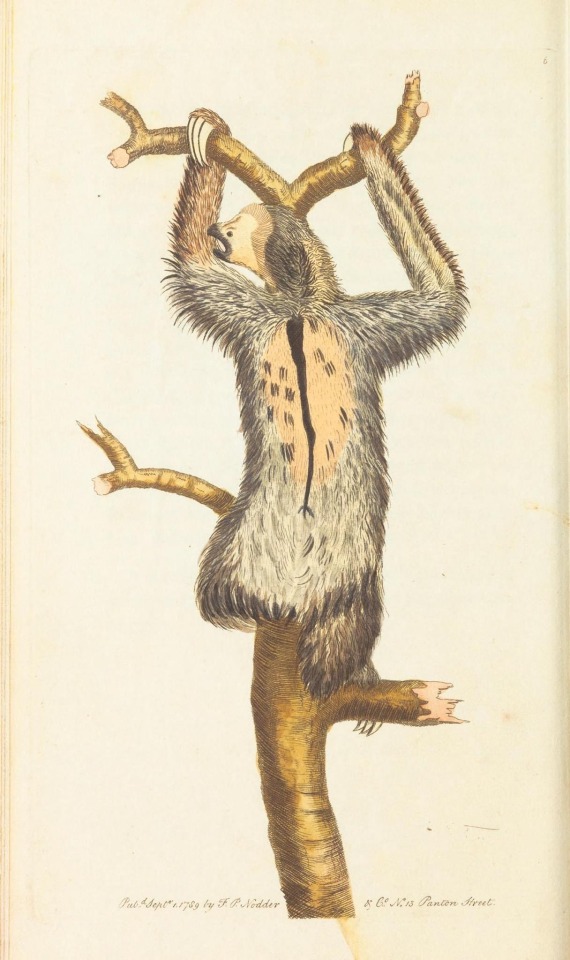
George Edwards’ male Pale-throated Sloth (Bradypus tridactylus) from The Naturalist’s Miscellany Vol. 1, 1789, looking rather offended! This is probably because it read the rude things being written about it in the accompanying text:
“So extraordinary is the union of awkwardness and ugliness in this uncommon creature, that it has generally been regarded as one of the most striking examples of animal deformity.” 🤨
“A celebrated naturalist, the Count Buffon, will not allow this creature to have any share in contributing to the general beauty in the chain of beings, but regards it as an ill-constructed mass of deformity, created only for misery….” ☹️
“With submission, however, to this lively naturalist, I should not hesitate to believe that the sloth, not withstanding this appearance of wretchedness and deformity, is as well-fashioned for its proper modes and habits of life, and feels as much happiness in its solitary and obscure retreats, as the rest of the animal world of greater locomotive powers and superior external elegance.” 🤷🏻♀️
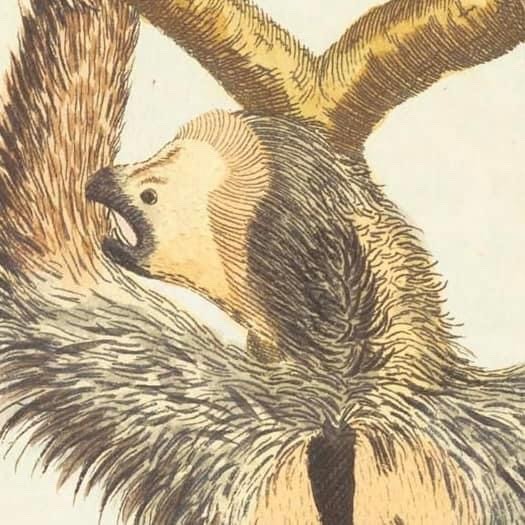
via Biodiversity Heritage Library
#animals in art#european art#animal holiday#illustration#18th century art#George Edwards#The Naturalist’s Miscellany#BHL#Biodiversity Heritage Library#natural history art#scientific illustration#sloth#International Sloth Day#lithograph#Pale-Throated Sloth
3 notes
·
View notes
Photo

Slo the Growth
Bigger isn’t always better. Take any given species and as body size increases so does cancer risk. But this rule doesn’t hold between species. Researchers investigate why by studying the genomes of existing mammals and the fossils of extinct mammals, collecting data on body mass and lifespan to mathematically calculate cancer risk. Charting species evolution, they found that before a species evolved to become bigger, genes involved in preventing tumour formation were duplicated. This not only occurred in elephants and their ancestors but also in sloths (pictured), anteaters, armadillos and their ancestors. Although modern-day sloths are small, their ancestors were some of the largest land-dwelling animals of their time. This group, collectively called Xenarthrans, all have a low calculated cancer risk. When investigating the evolution of cancer risk, it's therefore helpful to study both existing large mammals and those descending from extinct large mammals, such as the humble sloth.
Written by Lux Fatimathas
Image of brown-throated three-toed sloth (Bradypus variegatus), Cahuita National Park, by Christian Mehlführer. User: Chmehl on Wikipedia
Research by Juan Manuel Vazquez et al, Department of Biological Sciences, University at Buffalo, SUNY, Buffalo, NY, USA
Image originally published with a Creative Commons Attribution 2.5 Generic (CC BY 2.5)
Research published in eLife, December 2022
You can also follow BPoD on Instagram, Twitter and Facebook
#science#biomedicine#sloths#anteaters#armadillos#evolution#extinct ancestors#cancer#cancer risk#tumour suppressor genes#three-toed sloths
17 notes
·
View notes
Text
Perezosos-Los folívoros-Folivora- o filófagos (Phyllophaga)

Los folívoros (Folivora) o filófagos (Phyllophaga) son un suborden de mamíferos placentarios del orden Pilosa, comúnmente conocidos como perezosos o pereza. Son animales neotropicales de variado tamaño endémicos de las selvas húmedas de América Central y América del Sur . Las especies actuales se pueden clasificar en dos géneros: los perezosos de tres dedos (Bradypus, Bradypodidae) y los perezosos de dos dedos (Choloepus, Choloepodidae), pero se conocen más de 50 géneros
#Los folívoros (Folivora) o filófagos (Phyllophaga) son un suborden de mamíferos placentarios del orden Pilosa comúnmente conocidos como pere#¿Esta es la imagen y algunos datos (O no) la “Historia” la pones tú? ¡La tuya! ¿Lo harás...?
5 notes
·
View notes
Note
if you could be any type of land mammal what land mammal would you be
This has been in my inbox for like a week because I needed time to think about this and I had to be in the right headset. I’m not including typical pets (dogs especially) because it would be too man. But I think I have my pick:
Bradypus crinitus
They were discovered very recently in 2022. They’re from a forest in Brazil and we’re known as just the maned sloths, but the coconut heads of this guy showed that there’s two versions
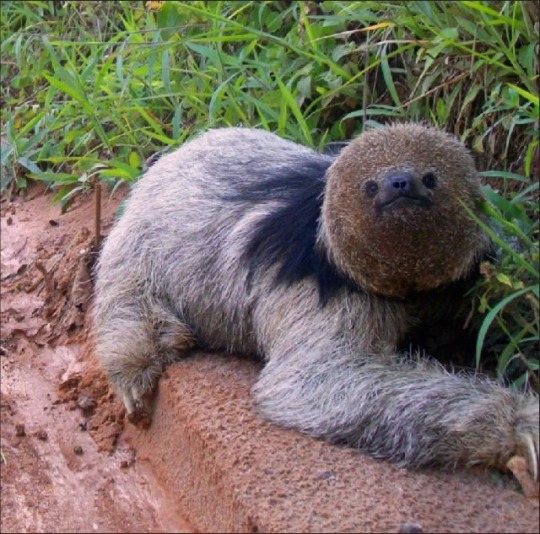
Fennec Fox
I recently have been a big fan of foxes. Probably my favorite fox is the Fennec Fox. It’s the smallest fox species
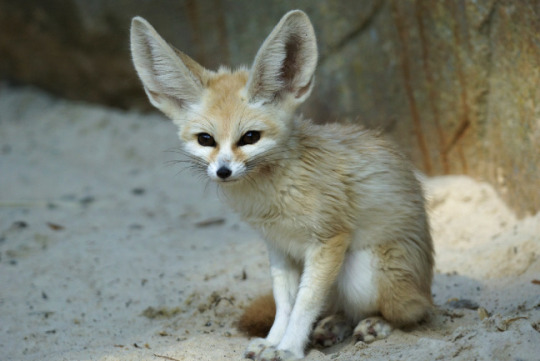
Bush Baby
Ngl, the name makes me laugh, it’s pocket sized, and hehe funny eyes. That’s really it
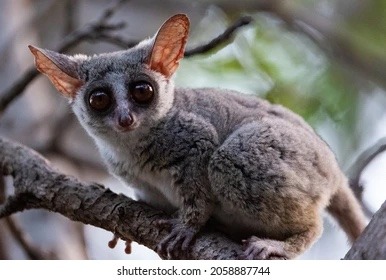
Capybara
No explanation needed
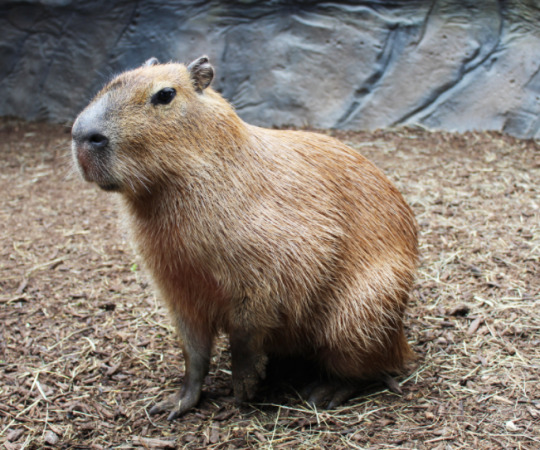
Dik-Dik
Funky lil guy who has a funny name

Jerboas
FUCKING WHAT ELSE CAN YOU ASK FOR???? LOOK AT THIS MAN!
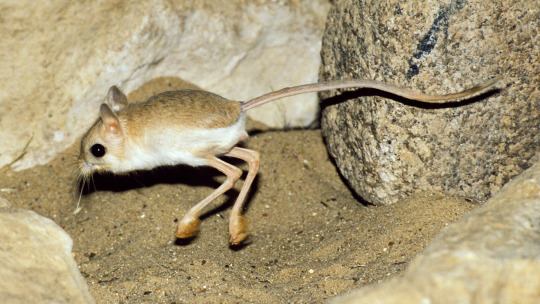
Lemmings
LOOK AT HIM!! LOOK!!!

Pangolin
Once again, self explanatory
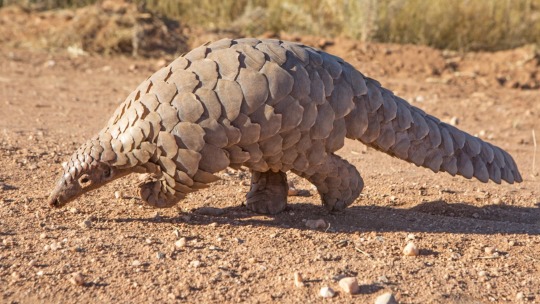
4 notes
·
View notes